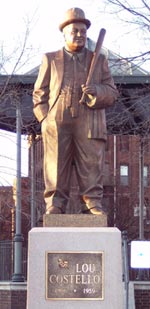All Her Teeth Were Ideas
"Thus it will appear that, shaken from its balance only by trivial things, my reason bore resemblance to that ocean-crag spoken of by Ptolemy Hephestion, which steadily resisting the attacks of human violence, and the fiercer fury of the waters and the winds, trembled only to the touch of the flower called Asphodel." Poe's wholly fictitious "Nubian geographer" serves as an authoritative stand-in for his own fascination with alternative geographies and other ultima thule. It may be that these territories are less exotic and closer to hand, as can be seen in a picture of grass growing up through curb concrete in an essay by Jonathan Skinner in the new eco language reader. This image, from Cecelia Vicuna's Unravelling Words & the Weaving of Water, is an example of what he calls the "third landscape" of "critical corridors and buffer zones" (24) where there is a proliferation of growth that humans can't match to their system of needs. Accordingly, for him, the job of what one might call "ecopoetry" would be a poetics that "attend[s] to the untended as the untended, essentially leaving it alone" (46-7). Whether Asphodel's powers are actual (like the saxifrage) or metaphorical, I don't know enough to say. Ginsberg calls the Asphodel both mad and cultivated, Williams seems to use it precisely to reflect upon how things "tend" (towards the untend or unintend), and "the sea/which no one tends/ is also a garden." I'm dealing with my own "third landscape issues," since a lovely wild vine on my fence was mysteriously cut overnight--suddenly something seemingly "out-of-control" became a locus of variety of exterior forces. I won't go into the whole tangled narrative that evolved out of this intervention, but given that I'm in a weird intersection where I live, on the one hand, next to an inland forest, but on the other next to an airstrip and industrial zones, and, as well, in a neighborhood which has garden walks (which to me have always reeked of a form of neighborhood surveillance and control of landscape aesthetics), these mini-struggles are bound to occur. I can't even start to articulate how that constant image of the plume of oil coming up through the water in the gulf is impacting (no, beating up) my ability to conceptualize these issues. I have tentative plans to talk with Jennifer Scappettone about her work delivered at the Rethinking Poetics conference, which circulates around such issues. And maybe, also back to the gulf. Thalassa!
Labels: Allen Ginsberg, asphodel, Berenice, Cecelia Vicuna, ecopoetry, Edgar Allan Poe, geology, Jennifer Scappettone, Jonathan Skinner, mapping, saxifrage, third landscape











